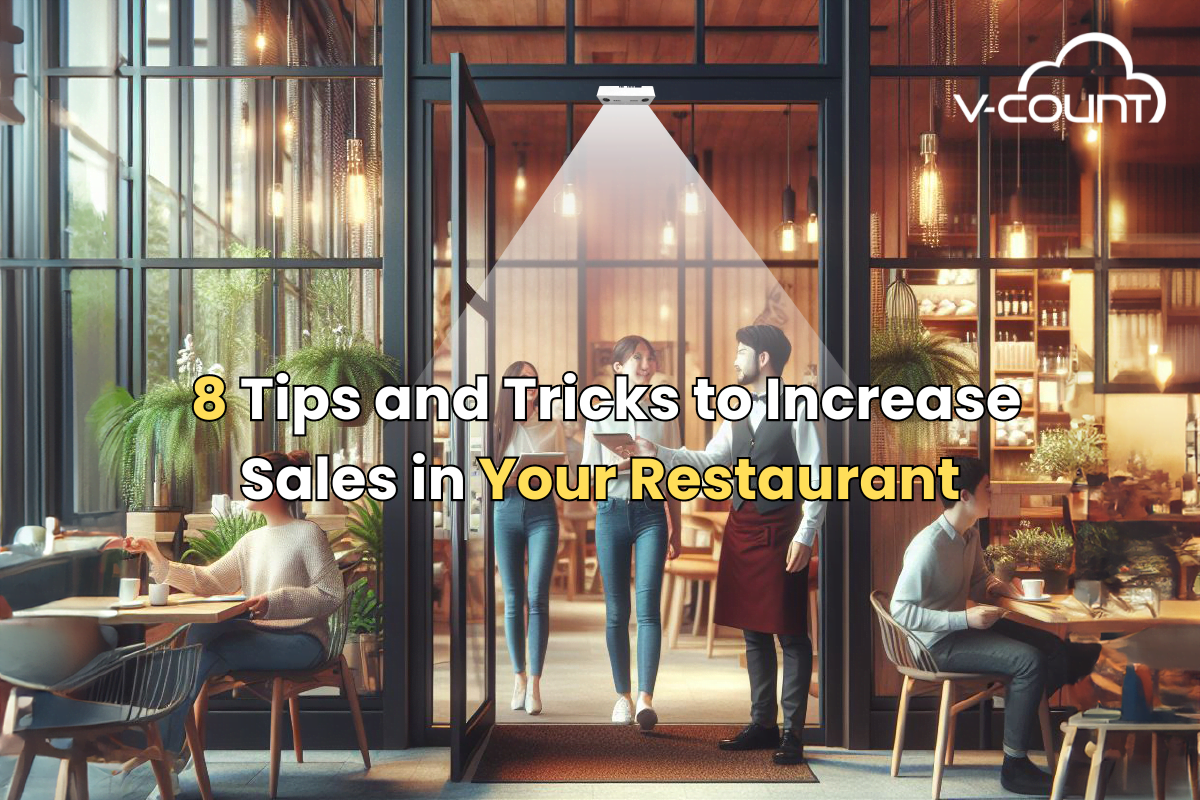Today, physical retailers and shopping malls remain vital drivers for sales, and more physical stores are leveraging technological solutions to optimize operations, improve customer satisfaction, and boost profitability.
Customer counters and retail data analytics platforms provide a wealth of information to improve various aspects of your physical space. Understanding footfall visitor traffic in your retail stores or malls allows you to identify areas for improvement and make informed business decisions.
Here are some of the many ways your business can leverage a people counting sensor and analytics platform.
Data Analysis Is Crucial to Increase Foot Traffic in Retail
Footfall analysis data from retail traffic counters provide accurate numbers of people entering your retail store. With this information, you can analyze your foot traffic numbers and compare them with your customers’ conversion rates and sales data, which will give you a clear understanding of your customers’ buying habits and ways to increase sales.
Efficient Staffing

Customer behavior and visitor numbers can help you better understand staffing needs. Footfall insights within a location can be broken down to the time of day. By aggregating this historical data, you can predict your busiest hours and days, and as a result, strategically allocate your staff. This ensures you have the right number of staff members at the right times, reducing abandonment rates and improving customer satisfaction.
Customer-Oriented Marketing Campaigns
Businesses can use V-Count’s business intelligence platform to determine the success of marketing campaigns. The Marketing Campaign Analysis dashboard helps you review your marketing efforts, compare marketing campaigns and events to optimize budgets, and get insights into how much you’ve spent on marketing to acquire a new visitor to your stores. It is a valuable metric to measure the effectiveness of your marketing activities.
Lower Cart Abandonment Rates

Lost revenue is one of the significant issues associated with shopping cart abandonment in retail. This is why retailers strive to understand why store abandonment happens and how they can fix it. By lowering its occurrence, you can regain thousands or millions of dollars in potential revenue.
Understanding your shopping cart abandonment rate can highlight some of the issues leading to it. Does your store layout allow for a smooth customer journey? Can customers easily find what they’re looking for? Does your checkout process take too long? Do you have enough staff to assist customers?
Gaining the trust of your shoppers, keeping their motivation to buy high, and making the checkout process as seamless as possible requires a smooth and fast checkout process.
With a Queue Management system, businesses like retailers can accurately calculate the number of customers at checkout queues and the average time they spend waiting. What puts businesses ahead of their competitors is gaining and maintaining consumer loyalty and effectively meeting customers’ expectations. Making the checkout process as short, straightforward, and quick as possible will decrease the chances that shoppers will get impatient and leave before making a purchase.
Safe & Healthy Shopping Environment
The COVID-19 era has vividly demonstrated a chilling effect on shopping in physical spaces. And while retail sales plummeted back in 2020, the world of retail is reawakening. Retail stores have been one of the first industries to roll out detailed safety plans in the post-covid era. These safety plans include enforcing face masks, scheduling regular health screenings for employees, and redesigning store layouts to create more space and promote one-way traffic flows.
Additionally, customer occupancy levels have become limited according to the size of the store. In addition to the usual face masks and temperature checks, many retail stores are utilizing people counting and visitor analytics solutions to reassure safety.
Real-time occupancy is another solution retailers use. It’s quite easy to use and install; V-Count connects the data from the sensors to digital screens at the entrances of stores; these screens display the numbers of people inside in real-time and whether it is safe or not to enter.
Staff can also stay informed with email and mobile alerts when limits are reached, thus facilitating social distancing, limiting their exposure, and keeping themselves and the customers safe.
Another benefit offered by the VCARE occupancy solution is facility management. Retailers can monitor and manage their occupancy for different zones – like toilets or elevators – to optimize sanitization depending on customer traffic, thus ensuring that everything is squeaky clean at all times.
Zone analysis is also an excellent solution for stores to redesign their space’s layout to minimize risks. It allows stores to grasp the visitors’ actions within the stores, which areas they are most attracted to, what products they search for, and what motivates them to buy.
Informed Leasing Decisions
People counting data can be employed for data-driven decision-making for retail real estate and property professionals. Retailers can share their traffic data with shopping mall owners and leasing managers to ensure that mutual traffic-driving activities are appropriately measured and improved over time. Historical and current traffic-per-square-meter data can be used to identify high-performing zones within retail stores and shopping centers. This can be used to support leasing negotiations and understand how external factors, like public holidays, can affect consumer behavior and traffic trends. Based on historical visitor traffic trends and patterns, managers can be well informed when negotiating lease contracts, resulting in increased profitability.
Whether through optimizing operations or making better marketing decisions, people counters are an incredible data source. Businesses should leverage these insights to fully understand how they operate and take actions that increase revenues.






